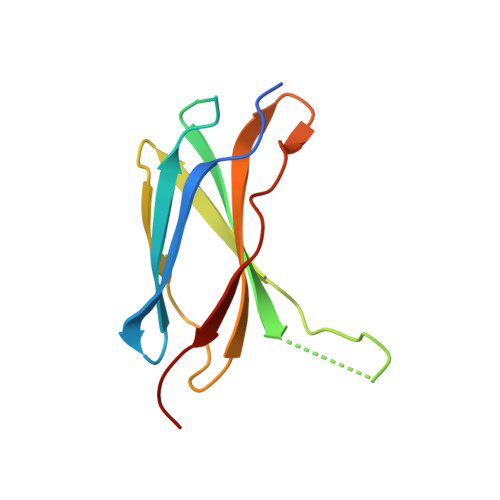Complex protein interactions mediate Drosophila Lar function in muscle tissue.
Kawakami, J., Brooks, D., Zalmai, R., Hartson, S.D., Bouyain, S., Geisbrecht, E.R.(2022) PLoS One 17: e0269037-e0269037
- PubMed: 35622884
- DOI: https://doi.org/10.1371/journal.pone.0269037
- Primary Citation of Related Structures:
6X38, 6X39, 6X3A - PubMed Abstract:
The type IIa family of receptor protein tyrosine phosphatases (RPTPs), including Lar, RPTP¦Ň and RPTP¦Ä, are well-studied in coordinating actin cytoskeletal rearrangements during axon guidance and synaptogenesis. To determine whether this regulation is conserved in other tissues, interdisciplinary approaches were utilized to study Lar-RPTPs in the Drosophila musculature. Here we find that the single fly ortholog, Drosophila Lar (Dlar), is localized to the muscle costamere and that a decrease in Dlar causes aberrant sarcomeric patterning, deficits in larval locomotion, and integrin mislocalization. Sequence analysis uncovered an evolutionarily conserved Lys-Gly-Asp (KGD) signature in the extracellular region of Dlar. Since this tripeptide sequence is similar to the integrin-binding Arg-Gly-Asp (RGD) motif, we tested the hypothesis that Dlar directly interacts with integrin proteins. However, structural analyses of the fibronectin type III domains of Dlar and two vertebrate orthologs that include this conserved motif indicate that this KGD tripeptide is not accessible and thus unlikely to mediate physical interactions with integrins. These results, together with the proteomics identification of basement membrane (BM) proteins as potential ligands for type IIa RPTPs, suggest a complex network of protein interactions in the extracellular space that may mediate Lar function and/or signaling in muscle tissue.
Organizational Affiliation:
Department of Cell and Molecular Biology and Biochemistry, University of Missouri-Kansas City, Kansas City, MO, United States of America.

















